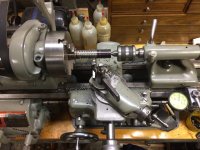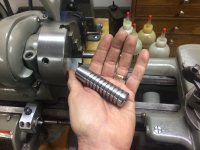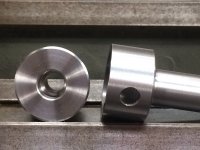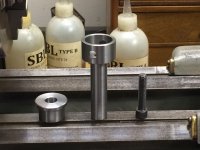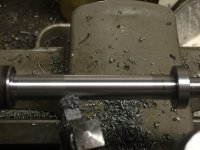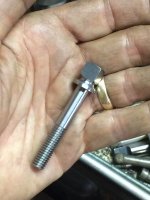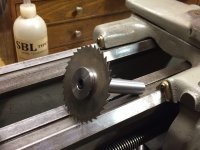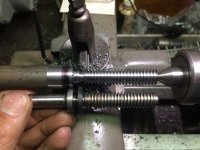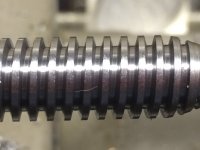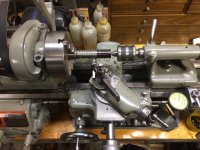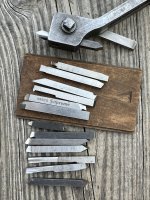So my goal for today was to make a video detailing how I make a TX200 guide out of acetal on a mini lathe. I spent the better part of the afternoon making this video only to discover during editing that all of my source material for the second half had no audio. Why you ask? Because I am dumb and forgot to charge my wireless mic. Now you may ask, "But Jon, why wouldn't you check your work as you went so you could catch things like this?" Well my answer to you would be the same as before. Because I am a dumb dumb.
Anyway, this is basically how I go about making the actual guide portion of the guide. If you would like I can upload the audio-less second half but OH MY GOSH is 15 minutes of video without audio hard to watch. I tried adding audio over it but that was way too much work trying to remember why my hands were doing this and that and honestly trying to make lathe noises by mouth is not easy and I started getting dizzy from the constant screeching. Lessons were learned.
Any who, here is my beginner guide. If you are not a beginner or notice something I can/should do differently, I am more than open to critiques here. Honestly I would appreciate them because I have zero formal training and am basically winging it.
Sorry for the poor audio by the way. It was my first attempt at any sort of real video and definitely need to work on how I record the audio especially when dealing with background noise. Live and learn!
As a final thought, I likely would have done this guide as a single piece in the future. I was mostly experimenting with re-using the factory base on my own guide and the only way to learn new things is to try new things. I will see how this setup holds up with time and go from there.
Here is a screanshot from my audio-less video that shows the completed main guide:

A top hat was also made and added after this but I don't really have any good pictures of it.
Anyway, this is basically how I go about making the actual guide portion of the guide. If you would like I can upload the audio-less second half but OH MY GOSH is 15 minutes of video without audio hard to watch. I tried adding audio over it but that was way too much work trying to remember why my hands were doing this and that and honestly trying to make lathe noises by mouth is not easy and I started getting dizzy from the constant screeching. Lessons were learned.
Any who, here is my beginner guide. If you are not a beginner or notice something I can/should do differently, I am more than open to critiques here. Honestly I would appreciate them because I have zero formal training and am basically winging it.
Sorry for the poor audio by the way. It was my first attempt at any sort of real video and definitely need to work on how I record the audio especially when dealing with background noise. Live and learn!
As a final thought, I likely would have done this guide as a single piece in the future. I was mostly experimenting with re-using the factory base on my own guide and the only way to learn new things is to try new things. I will see how this setup holds up with time and go from there.
Here is a screanshot from my audio-less video that shows the completed main guide:
A top hat was also made and added after this but I don't really have any good pictures of it.
Last edited:
